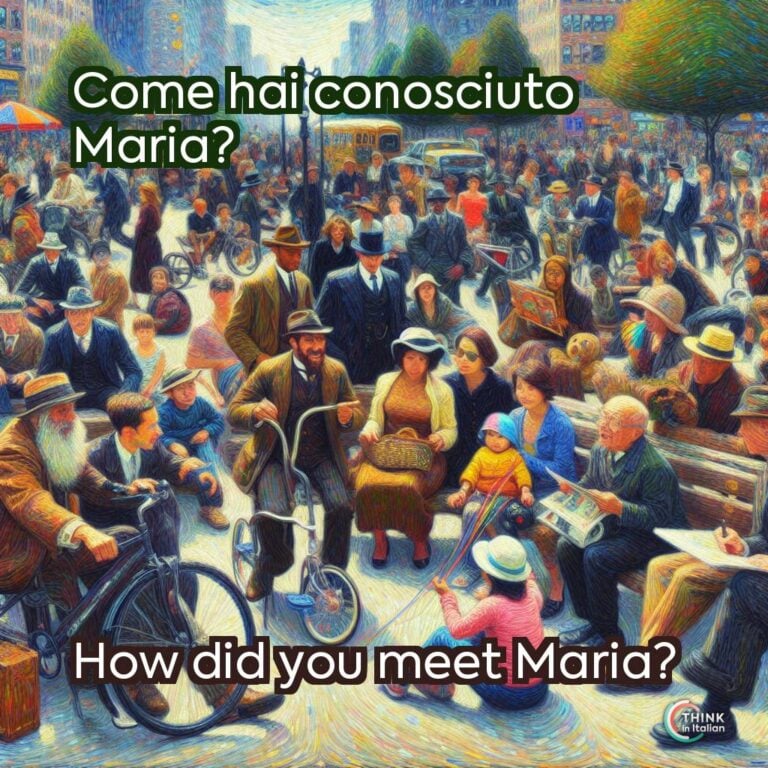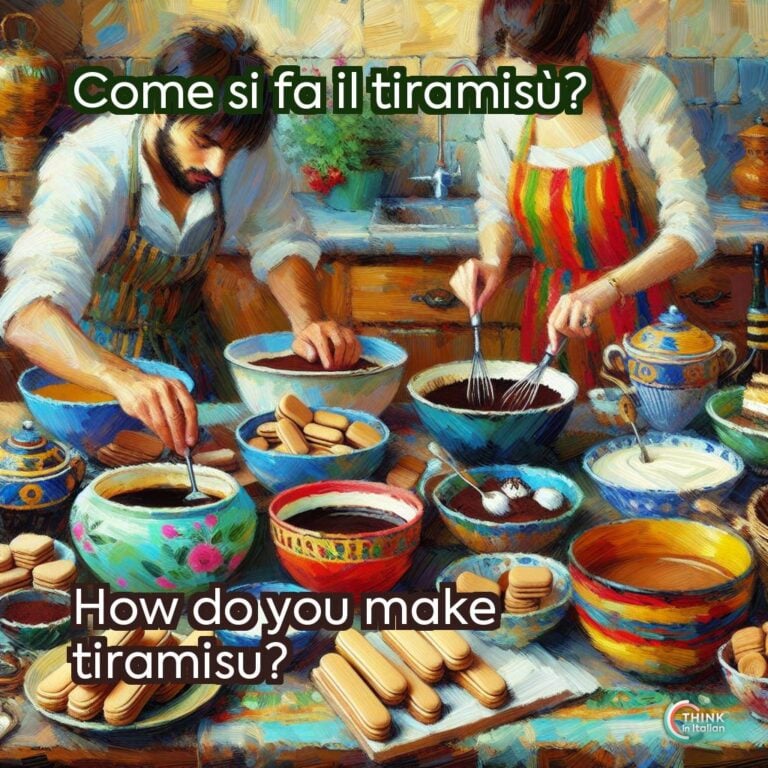“How” in Italian
As simple as it is, the word “how” in Italian is come. Be careful though! It is pronounced the way you read it, so it is very far from the English pronunciation of the verb “to come”.
The Italian come can be both a conjunction and an adverb depending on the way it is used. Have a look at the two sentences below to spot the difference:
Mi piace come hai arredato casa.
I like how you decorated your house
Queste scarpe sono come le mie.
These shoes are like mine.
Come stai oggi?
How are you today?
As you can see, in the first sentence come is linking two phrases, therefore functioning as a conjunction. In the second one, it is introducing a comparison, still as a conjunction.
In the last one, instead, it works as an interrogative adverb, because it used to ask questions in Italian, just like the wh-pronouns in English.
The versatility of the word come in Italian is something that is worth investigating, therefore let me now show you how to use it in context.
“Come” in Italian
“Come”: Meaning
As I showed in the previous examples, come can be translated to “how” when you’re inquiring about the way something is done.
Non so come fare questo esercizio.
I don’t know how to do this exercise.
Come si fa la carbonara?
How do you make carbonara?
Despite its grammatical function is different in these two sentences – it is a conjunction in the first one and an adverb in the second one – its translation is the same: “how”.
However, come can also mean “like” or “as” when you are comparing things or expressing similarity, as you can see in the sentence below:
Lei canta come una professionista.
She sings as a professional.
Dovresti andare in palestra, come Giorgio.
You should go to the gym, like Giorgio.
“Come”: Use
The primary use of come is to ask questions about the manner or method in which something occurs. When used this way, it corresponds to the English “how”:
Come stai?
How are you?
Come funziona?
How does it work?
Come si dice quello in italiano?
How do you say that in Italian?
Come as adverb can also be used in exclamatory sentences, to express surprise, admiration, or astonishment. In this context, it still retains the meaning of “how” but is used for emphasis in statements rather than questions:
Come sei bella oggi!
How beautiful you are today!
Come corre veloce quella macchina!
How fast that car runs!
In its role as a comparative conjunction, come is used to compare two actions, qualities, or states, and is equivalent to “like” or “as” in English. Here are some examples:
Parla come un madrelingua.
He speaks like a native speaker.
Il mio cane è forte come un leone.
My dog is as strong as a lion.
Sto lavorando come un matto per finire questo progetto.
I’m working like crazy to finish this project.
Notice that come is commonly used in if-clauses in Italian, called periodo ipotetico. Here, it is used to form conditional or hypothetical comparisons, where it takes on the meaning of “as if”.
Parli come se fossi un esperto.
You speak as if I were an expert.
Mi guarda come se non mi avesse riconosciuto.
He looks at me as if he didn’t recognize me.
In these sentences, come se is used to create a comparison between the actual situation and a hypothetical or imagined one, and, as you can see, it is translated into “as if” in Italian.
Make sure you know how to conjugate congiuntivo imperfetto and congiuntivo trapassato to use this type of structure!
Come ti Sembra?
How does it seem?
Learning the use of come in Italian is not hard, just make sure you know the right contexts! It is a flexible word that can mean “how” or “like”, depending on the way it is used.
Whether you’re asking about the manner in which something happens or comparing two things, come will likely be the word you need. Get ready to ask questions in Italian, then!




